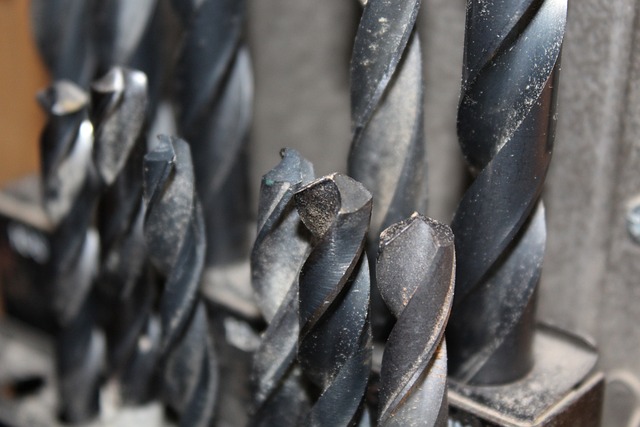Safe Tree Removal Lewisville: Hazards & Reputable Services Guide
In Lewisville, TX, prioritizing safety during tree removal is essential. Engage licensed arborists f…….
Hazardous Tree Removal Lewisville Tx Matters - The Key Reasons
Unlocking hazardous-tree-removal-lewisville-tx.instantupdate.net. - The Complete Beginner\\\'s Guide
In the vibrant city of Lewisville, Texas, a specialized yet critical service operates behind the scenes to ensure the safety and well-being of residents: hazardous tree removal. This article delves into the intricate world of this essential practice, exploring its definition, global reach, economic implications, technological innovations, regulatory framework, challenges, real-world applications, and future prospects. By the end, readers will grasp the multifaceted nature of hazardous tree removal and its profound impact on urban environments worldwide.
Hazardous tree removal refers to the strategic and careful extraction of trees that pose significant risks to properties, infrastructure, or public safety due to their weakened, diseased, or structurally unsound conditions. In Lewisville, Texas, this specialized service is designed to address the unique challenges posed by the local climate, topography, and urban development patterns.
Core Components:
Risk Assessment: Evaluating tree health, structural integrity, and potential hazards through visual inspections, dendrochronological analysis, and advanced diagnostic tools.
Planning and Permitting: Developing safe removal strategies, obtaining necessary permits from local authorities, and coordinating with utility companies to minimize disruptions.
Equipment and Techniques: Utilizing specialized equipment such as chain saws, crane machines, and aerial platforms to access and remove trees safely and efficiently.
Debris Management: Implementing proper disposal and recycling methods for tree debris, ensuring minimal environmental impact and maximizing resource recovery.
Hazardous tree removal is not confined to Lewisville; it is a global phenomenon influenced by urbanization, climate change, and increasing awareness of environmental safety.
International Influence:
Key Trends:
The economic aspects of hazardous tree removal in Lewisville TX are multifaceted, reflecting the complex interplay between market dynamics, public safety, and environmental stewardship.
Market Dynamics:
Investment Patterns:
Technological innovations play a pivotal role in enhancing the efficiency, safety, and sustainability of hazardous tree removal services.
Significance of Tech:
Future Potential:
The regulatory framework surrounding hazardous tree removal in Lewisville TX is designed to balance public safety, environmental protection, and economic considerations.
Key Policies and Regulations:
Regulatory Bodies:
Despite its critical importance, hazardous tree removal faces challenges that demand innovative solutions and continuous improvement.
Main Challenges:
Criticisms and Solutions:
Real-world examples illustrate the effective implementation of hazardous tree removal strategies in diverse urban settings, offering valuable insights for practitioners worldwide.
Case Study 1: Downtown Seattle, Washington:
Seattle faced a significant challenge with its vast urban forest, which included many old-growth trees at risk of failure due to root disruption from underground utilities and climate change. The city adopted a proactive approach, utilizing drone surveys and LiDAR mapping for tree health assessment. They implemented targeted structural pruning and, where necessary, safely removed at-risk trees, minimizing disruptions to nearby properties. This case highlights the benefits of advanced technology and proactive management in maintaining urban forests while mitigating risks.
Case Study 2: Post-Hurricane Maria Recovery, Puerto Rico:
The devastating hurricane left many trees in Puerto Rico severely damaged or uprooted, posing significant hazards to rebuilt infrastructure. Local authorities collaborated with international experts to develop a comprehensive tree removal plan, prioritizing the most at-risk areas. They employed specialized equipment and temporary storage facilities for debris management, ensuring efficient recovery while adhering to environmental conservation guidelines. This collaboration and well-planned response demonstrated the importance of preparedness and flexible strategies in disaster recovery scenarios.
Case Study 3: Reforesting Tokyo, Japan:
Following a major earthquake, Tokyo faced the dual challenges of hazardous tree removal and urban reforestation. The city integrated advanced technologies, such as AI-driven risk assessment tools, to prioritize tree removals based on severity. They implemented a robust debris management system, utilizing recycled wood for construction projects, including park benches and street furniture. This holistic approach not only addressed immediate hazards but also contributed to long-term urban greening efforts, showcasing the potential for sustainable recovery and revitalization.
The future of hazardous tree removal in Lewisville TX is shaped by emerging technologies, shifting environmental priorities, and evolving urban landscapes.
Potential Growth Areas:
Emerging Trends:
Strategic Considerations:
Hazardous tree removal is not merely a service; it is an essential practice that shapes the safety, resilience, and sustainability of urban environments. From Lewisville TX to global cities, this specialized field continues to evolve, driven by technological advancements, shifting environmental imperatives, and changing urban landscapes.
As communities navigate the complexities of urbanization and climate change, effective hazardous tree removal strategies will remain critical for protecting lives, infrastructure, and the environment. By embracing innovative technologies, fostering public engagement, and adopting adaptive management practices, Lewisville TX can set an example for sustainable and resilient urban forestry worldwide.
Q1: How do I know if a tree on my property is hazardous?
A1: Regular visual inspections, especially after severe weather events, can help identify hazards. Look for signs like split branches, decay, uneven growth, or damage from pests. Professional arborists can also perform thorough assessments using advanced tools to determine risk levels.
Q2: What are the typical costs associated with hazardous tree removal?
A2: Costs vary based on tree size, complexity of removal, access challenges, and additional services like stump grinding. On average, removal can range from $500 to $3000 or more for large, complex trees. It’s recommended to obtain quotes from reputable local tree service providers.
Q3: Can hazardous tree removal be done during severe weather?
A3: While some emergency removals may be necessary during severe weather, it is generally safer and more efficient to schedule these projects in calmer conditions. Weather-related hazards can increase the complexity and risk of tree removal operations, affecting both worker safety and project timelines.
Q4: How do I ensure proper disposal of tree debris after removal?
A4: Reputable tree service providers offer debris management services, including proper disposal and recycling. For smaller projects, local regulations often allow for responsible on-site composting or chipping. Reusing wood chips for landscaping or turning them into biofuel are also eco-friendly options.
Q5: What role does public awareness play in hazardous tree removal?
A5: Public support is crucial for the success of tree removal projects, especially when facing community opposition. Educating residents about tree risks, safety concerns, and environmental benefits can foster understanding and encourage proactive tree management.

In Lewisville, TX, prioritizing safety during tree removal is essential. Engage licensed arborists f…….

In Lewisville, TX, prioritizing property safety involves identifying and mitigating hazardous trees……..